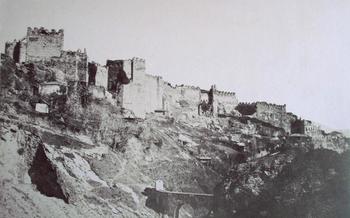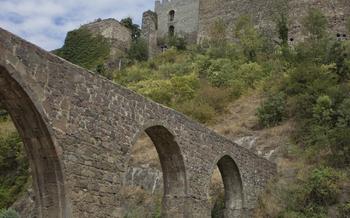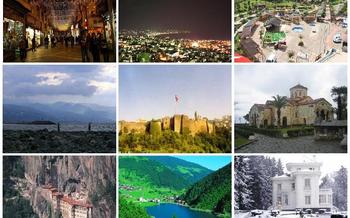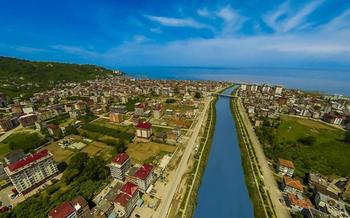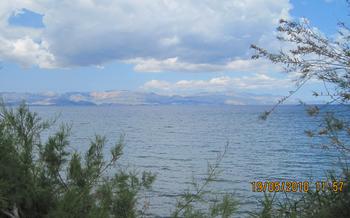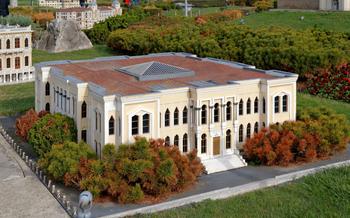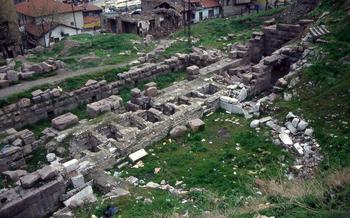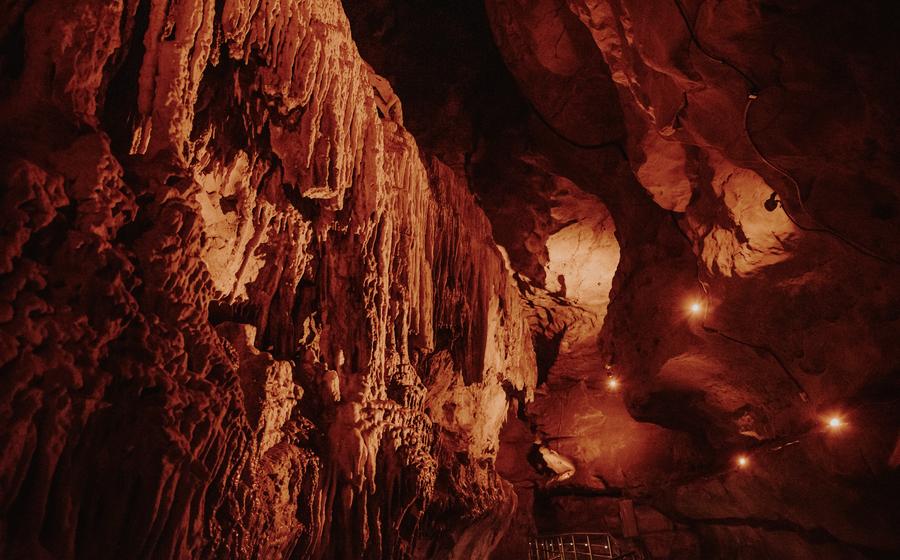
Cave of Çal
- Historical Significance
- Geological Formations
- Archaeological Findings
- Paleontological Significance
- Natural Beauty
- Guided Tours
- Accessibility
- Admission Fee and Timings
- Photography and Videography
- Safety Precautions
- Respecting the Environment
- Local Cuisine
- Nearby Attractions
- Insider Tip: Discover the Hidden Chamber of Wonders
Historical Significance
The Cave of Çal, nestled in the heart of Trabzon, Turkey, holds a profound historical significance that has captivated the imagination of explorers and historians alike. Its ancient chambers and winding passages have yielded a treasure trove of artifacts and discoveries, shedding light on the rich history of the region. Archaeological excavations have unearthed remnants of ancient civilizations, including pottery, tools, and jewelry, providing glimpses into the lives of those who once inhabited these mysterious depths. Legends and myths surround the cave, weaving tales of hidden treasures guarded by mythical creatures, adding to its allure and mystique. The Cave of Çal stands as a testament to the region's rich cultural heritage, inviting visitors to step back in time and delve into its captivating past.
Geological Formations
The Cave of Çal is renowned for its mesmerizing geological formations, which have been shaped over millions of years by the relentless forces of water and minerals. The cave's most striking features are its stalactites and stalagmites, which create a breathtaking spectacle of hanging icicles and towering pillars. These delicate formations are composed of calcium carbonate, which is deposited by water seeping through the limestone bedrock. As the water evaporates, the minerals crystallize, forming the intricate and diverse shapes that adorn the cave's walls and ceilings.
The cave also boasts a variety of other geological formations, including flowstones, which resemble frozen waterfalls cascading down the cave walls; helictites, which are twisted and contorted stalactites; and cave pearls, which are spherical concretions formed by the accumulation of calcite around a nucleus. These diverse formations, combined with the cave's unique lighting conditions, create a surreal and awe-inspiring atmosphere that leaves visitors in awe.
Archaeological Findings
Archaeological excavations in the Cave of Çal have unearthed a treasure trove of artifacts that shed light on the region's rich past. Ancient tools, pottery fragments, and jewelry suggest that the cave was inhabited as early as the Neolithic period. Excavations have also revealed evidence of later civilizations, including the Romans and Byzantines.
One of the most significant discoveries in the cave was a collection of well-preserved manuscripts written in an ancient script. These manuscripts contain valuable information about the history, culture, and religious beliefs of the region's early inhabitants. They provide insights into the daily lives, customs, and traditions of the people who once called this cave their home.
The archaeological findings in the Cave of Çal have greatly contributed to our understanding of the region's history. They offer a glimpse into the lives of ancient civilizations and provide valuable information about their cultural practices and technological advancements. Ongoing archaeological research continues to uncover new artifacts and uncover more secrets of the cave's past.
Paleontological Significance
The Cave of Çal holds immense paleontological significance due to the presence of numerous fossils of ancient animals and plants. These fossils provide valuable insights into the region's prehistoric life and contribute to our understanding of past ecosystems. Paleontologists have discovered fossilized bones and teeth of various mammals, including extinct species such as saber-toothed tigers, mammoths, and giant ground sloths. Additionally, the cave has yielded fossils of birds, reptiles, and amphibians, offering a glimpse into the diverse fauna that once inhabited the area.
Furthermore, the discovery of plant fossils, including fossilized leaves, pollen, and seeds, has shed light on the region's ancient flora. These fossils have helped scientists reconstruct the vegetation that thrived in the area during different geological periods. The presence of fossilized insects, such as beetles and butterflies, has also provided insights into the region's paleoenvironment.
Ongoing paleontological research and projects continue to uncover new and exciting fossils within the Cave of Çal. These discoveries contribute to our understanding of the region's evolutionary history and help piece together the puzzle of life's journey through the ages.
Natural Beauty
The Cave of Çal is a true spectacle of nature, showcasing breathtaking beauty that leaves visitors in awe. As you enter the cave, you're greeted by a symphony of glistening stalactites and shimmering stalagmites, creating an ethereal and magical atmosphere. The intricate chambers, adorned with these natural wonders, seem to come alive under the soft lighting, casting a warm glow on the cave's walls. The acoustics within the cave are equally captivating, with every sound reverberating through the vast chambers, adding to the magical ambiance. Prepare to be mesmerized by the natural beauty of the Cave of Çal, where every corner reveals a new wonder, leaving you with lasting memories of this subterranean paradise.
Guided Tours
Exploring the Cave of Çal with a guided tour offers a safe, informative, and enriching experience. Professional tour guides, passionate about the cave's history and geology, lead visitors through its intricate chambers, revealing the secrets hidden within. Guided tours are available in various languages, ensuring that visitors from all over the world can appreciate the cave's wonders.
Tours typically start at the cave's entrance, where guides provide a comprehensive overview of its history, geological formations, and archaeological significance. As visitors venture deeper into the cave, guides point out the unique features and formations, explaining the processes that created them over millions of years. They also share fascinating stories and legends associated with the cave, bringing its rich history to life.
The benefits of taking a guided tour are numerous. Guides ensure the safety of visitors by leading them through safe routes and providing necessary equipment, such as helmets and flashlights. Their expertise allows visitors to make the most of their experience, as they can ask questions, receive personalized explanations, and gain a deeper understanding of the cave's significance. Guided tours are also convenient, as visitors do not have to worry about navigation or finding their way around the cave's complex network of tunnels and chambers.
Accessibility
The Cave of Çal is easily accessible for visitors from Trabzon. The cave is located approximately 30 kilometers from the city center and can be reached by car or public transportation.
For those driving, the D915 road leads directly to the cave. Parking is available on-site for a small fee.
Public transportation is also an option, with buses departing from Trabzon Bus Station regularly. The journey takes approximately 45 minutes, and the bus stop is located near the cave entrance.
The Cave of Çal is accessible to visitors of all abilities. A paved path leads from the parking area to the cave entrance, and there are handrails and steps to assist with navigation. The cave is well-lit, and the walkways are wide enough for wheelchairs and strollers.
The cave is committed to sustainable tourism practices and has taken steps to minimize its environmental impact. The use of plastic bags and single-use plastics is prohibited, and visitors are encouraged to bring their own reusable water bottles. The cave is also powered by renewable energy sources.
Admission Fee and Timings
Visiting the Cave of Çal requires an admission fee that varies depending on the season and the type of tour. During the high season (June to September), the standard adult ticket price is approximately 50 Turkish Lira (around 50 USD). Reduced rates are available for students and seniors with valid identification. Families can benefit from discounted family packages.
The cave's operating hours are generally from 9:00 AM to 5:00 PM daily. However, it is advisable to check the official website or contact the local tourism office for any seasonal variations or special events that may affect the opening hours.
To avoid the crowds and enjoy a more peaceful experience, it is recommended to visit the cave during the shoulder seasons (April-May and October-November). During these periods, the weather is still pleasant, and the cave is less crowded, allowing visitors to fully appreciate its beauty and tranquility.
Photography and Videography
The Cave of Çal offers a unique opportunity for photography and videography enthusiasts to capture the stunning beauty of its natural formations. Visitors are allowed to bring cameras and tripods to document their experience, but flash photography is prohibited to preserve the cave's delicate ecosystem. To capture the best shots, use a wide-angle lens to capture the vastness of the chambers and the intricate details of the stalactites and stalagmites. Experiment with different lighting techniques to highlight the cave's unique features and create dramatic effects. Remember to respect the cave's environment and avoid disturbing the formations or wildlife while taking photos or videos.
Safety Precautions
Exploring the Cave of Çal requires a responsible approach to safety. Visitors should navigate carefully, wearing appropriate footwear with good grip to avoid slipping on the cave's often-damp surfaces. Uneven terrain and low-hanging formations demand attention to avoid bumps or falls. Staying on marked trails ensures visitors remain on safe paths, preventing any unnecessary risks. Awareness of the surroundings is crucial, and straying from designated areas is strongly discouraged. Proper lighting is essential; visitors should carry a flashlight or headlamp to illuminate their path adequately. Respecting these safety measures ensures a safe and enjoyable experience for all who venture into the Cave of Çal's enchanting depths.
Respecting the Environment
The Cave of Çal is a delicate ecosystem that has remained pristine for thousands of years. As visitors, it is our responsibility to respect and protect its natural beauty. Avoid littering, disturbing wildlife, or touching the cave formations. These actions can damage the cave's fragile environment and impact the delicate balance of its ecosystem. By minimizing our environmental footprint, we can ensure that future generations can also enjoy the cave's wonders. Remember, we are guests in this extraordinary natural cathedral, and it is our duty to leave it as we found it, if not better.
Local Cuisine
When visiting the Cave of Çal, take the opportunity to savor the delights of traditional Turkish cuisine. The region boasts a rich culinary heritage, blending flavors and influences from diverse cultures.
For an authentic experience, head to local restaurants or cafes in the nearby towns and villages. Sample the tantalizing mezes, an array of small dishes that showcase the region's culinary artistry. Indulge in grilled meats, succulent kebabs, and freshly caught seafood, all prepared with local herbs and spices.
Don't miss the opportunity to try gözleme, a traditional Turkish flatbread filled with savory ingredients like spinach, cheese, or minced meat. Savor the sweet delight of künefe, a crispy shredded pastry topped with melted cheese and drenched in syrup.
Turkish cuisine is more than just food; it's a cultural expression deeply rooted in the region's history. Embrace this culinary journey and discover the flavors that make this part of Turkey so special.
Nearby Attractions
In the vicinity of the Cave of Çal, visitors can embark on a journey through history and nature. The ancient ruins of Trabzon Castle stand as a testament to the region's rich past, while the stunning Uzungöl, a serene mountain lake, offers breathtaking views and a tranquil atmosphere. For those seeking adventure, the nearby Karaca Cave boasts impressive geological formations and a unique underground ecosystem.
Transportation options to these attractions are readily available, with guided tours and package deals offering a seamless and hassle-free experience. Immerse yourself in the region's captivating history, marvel at the wonders of nature, and discover the hidden gems that await in the surroundings of the Cave of Çal.
Insider Tip: Discover the Hidden Chamber of Wonders
Beyond the well-trodden paths of the Cave of Çal lies a secret chamber known only to a few. This hidden gem, tucked away in a remote corner of the cave, is a sight to behold. Its walls are adorned with sparkling crystals that shimmer under the dim light, creating a magical atmosphere. The chamber is home to rare and delicate formations that have been preserved due to their secluded location.
To find this hidden chamber, follow the main path until you reach a narrow passageway on the left. Squeeze through the passage and continue for about 50 meters, keeping an eye out for a small opening on the right. This opening leads to the hidden chamber.
Exploring the hidden chamber is an experience like no other. The formations are intricate and awe-inspiring, and the atmosphere is serene and peaceful. It's a place where you can truly appreciate the beauty and wonder of the natural world. Remember to tread carefully and respect the delicate ecosystem of this hidden treasure.
